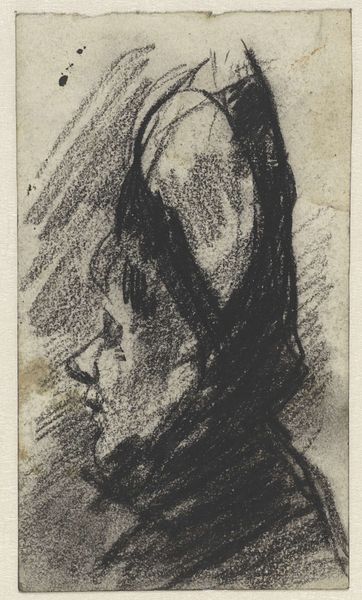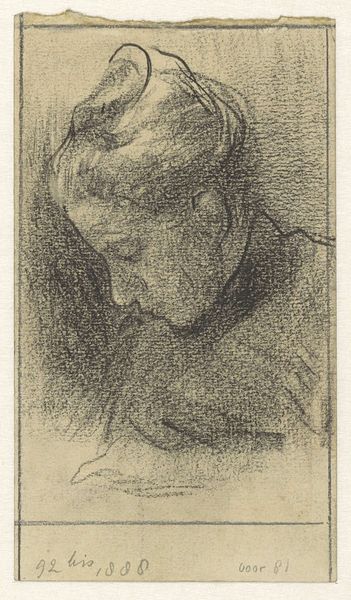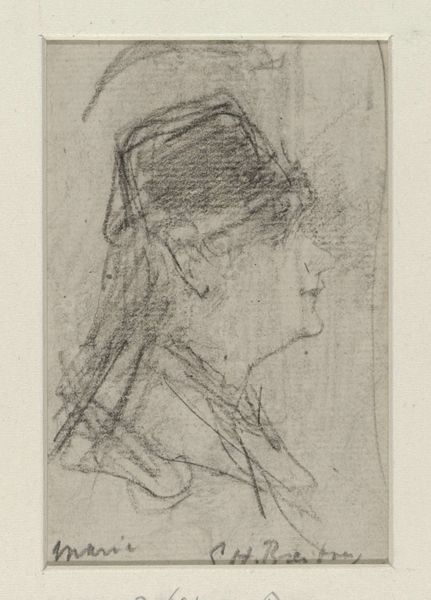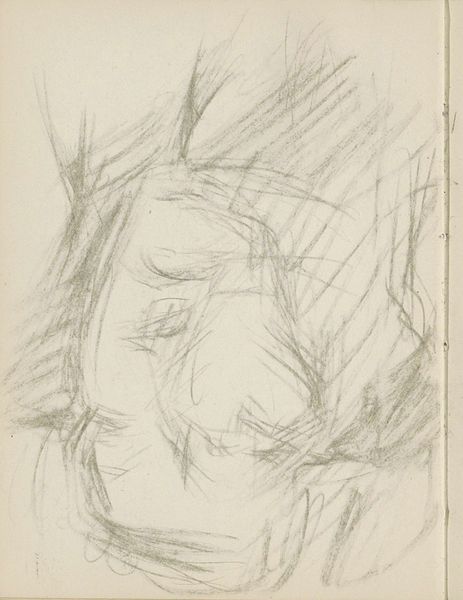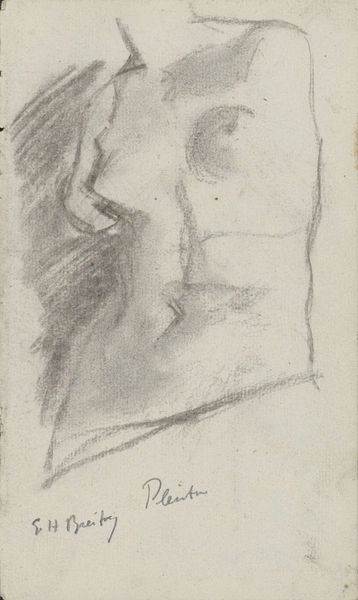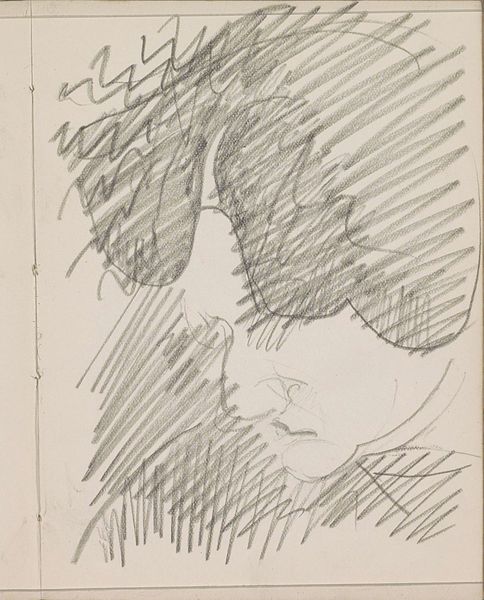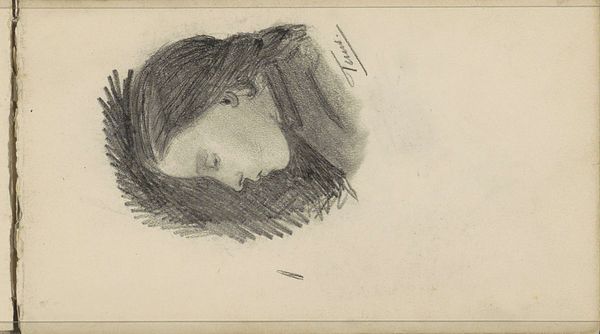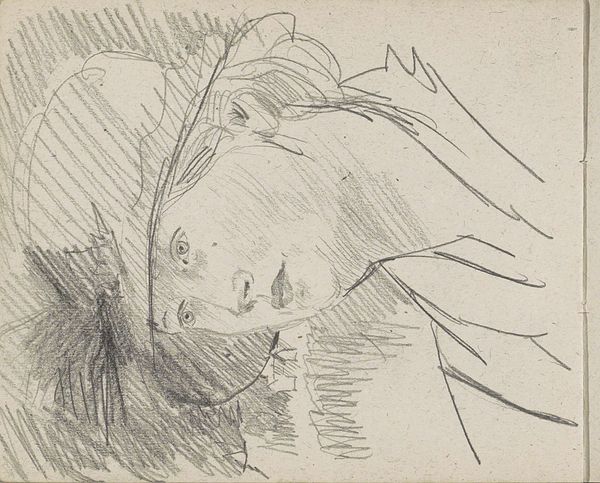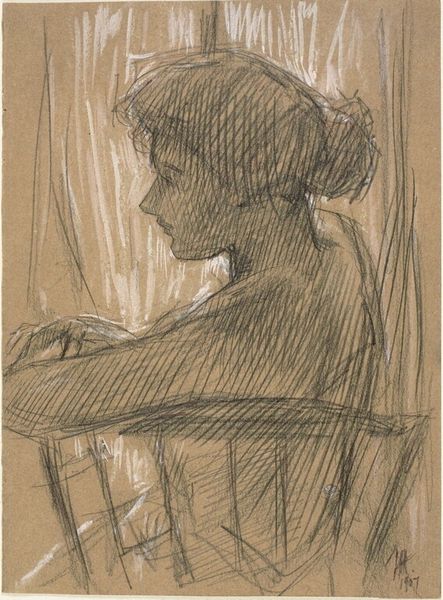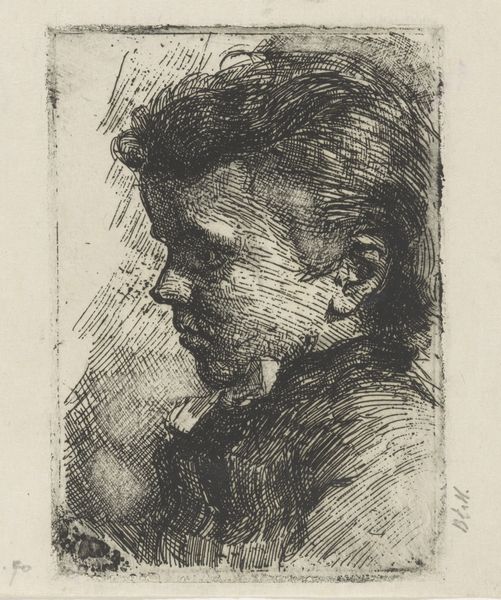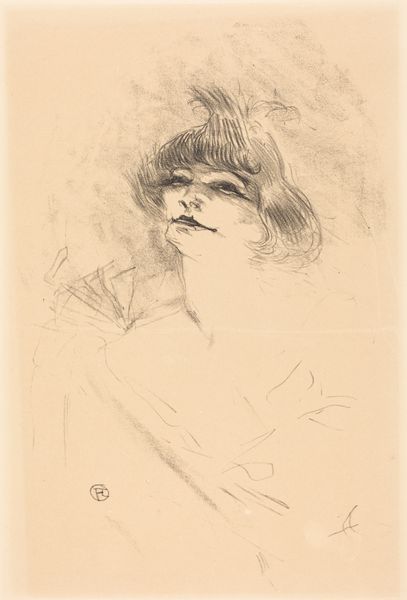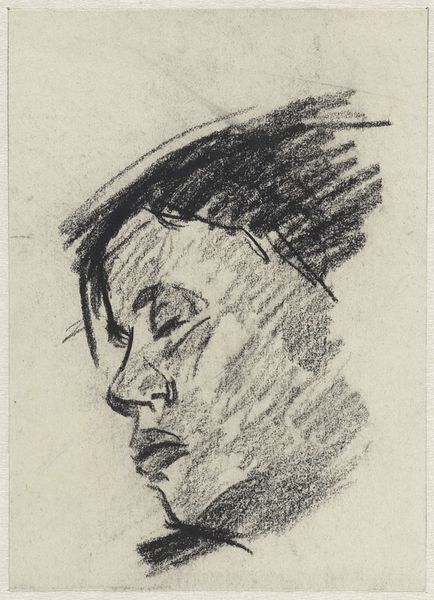
drawing, pencil
#
portrait
#
pencil drawn
#
drawing
#
self-portrait
#
pencil sketch
#
figuration
#
pencil
#
history-painting
#
realism
Dimensions: height 144 mm, width 86 mm
Copyright: Rijks Museum: Open Domain
Curator: Looking at this piece, Jan Veth's "Kinderkopje, naar links," created sometime between 1874 and 1925...it's incredibly intimate, almost like a captured thought. Editor: My first impression? Melancholy. The soft pencil strokes give it this fleeting, almost dreamlike quality. It feels like a memory fading. Curator: Veth really captured the ephemerality of childhood, didn't he? You know, he was deeply influenced by realism, trying to present a subject objectively. Editor: Realism often seeks objectivity, but representation is never neutral. Looking at this drawing through a lens of historical childcare practices reveals something else entirely. Was the child ill? Unhappy? Were there power dynamics in play that the softness of the pencil seeks to mask? Curator: That’s a good point, and one that can deepen our understanding. I think, as well, the medium, that simple pencil, contributes so much. The fragility of the line...it suggests vulnerability. Like the child could just turn to dust. Does it speak to societal perceptions of childhood frailty in the time the art work was produced? Editor: Definitely. There's a long history of viewing children as inherently vulnerable, a perception tied to social and economic factors as well as biological ones. Who was worthy of our empathy, and whose suffering could be conveniently ignored? What power dynamics are operating within such an imbalanced gaze? The loose sketching style could echo feelings about those living on the fringes, as not fully present or substantial beings. Curator: Veth might agree; it is a study piece in the purest sense—a fleeting look before moving onto more lasting works, right? The drawing has imperfections in a beautiful way: some visible lines from, what seems to me, an early erasure, which emphasizes the fragility and impermanence. The work appears unfinished. What do we think this incompletion adds to its message? Editor: Incompletion makes the observer wonder about the person behind the gaze. Curator: I find it beautiful how this small, unassuming sketch can provoke so much thought about time, memory, and even mortality. Editor: For me, this "Kinderkopje" serves as a gentle reminder that even seemingly straightforward portrayals can carry a multitude of layers concerning our ideas of value and belonging. It requires that we confront a whole host of different, difficult societal problems.
Comments
No comments
Be the first to comment and join the conversation on the ultimate creative platform.
